Investing in an industrial oil-fired boiler is a major capital decision, and many businesses struggle with budgeting due to the wide variation in costs. Without a clear understanding, companies may face unexpected expenses, delayed projects, or choosing an undersized/oversized unit that affects long-term efficiency.
The cost of an industrial oil-fired boiler generally ranges from $25,000 to over $250,000 depending on boiler capacity (measured in tons/hr or BHP), pressure rating, efficiency level, and whether it is packaged or custom-engineered. Additional expenses include installation, auxiliary equipment (burner, economizer, feedwater system, control panels), and operational costs such as fuel and maintenance. For a complete installed system, total project costs may be 1.5–3 times the base boiler price.
Understanding these cost factors allows businesses to make accurate budget plans and optimize ROI.
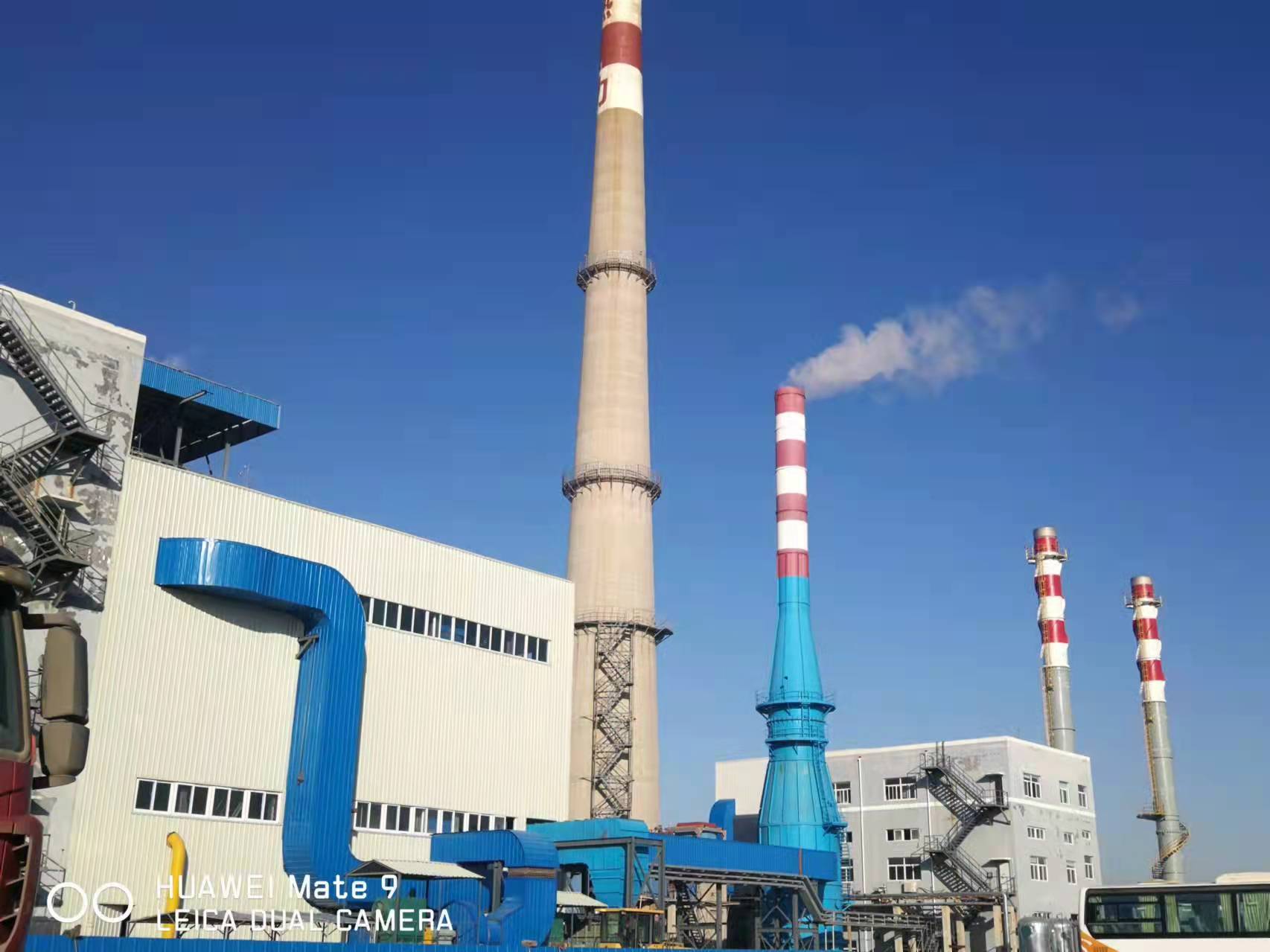
What Factors Influence the Price of an Industrial Oil-Fired Boiler?
When investing in an oil-fired boiler, many plant operators focus only on the quoted purchase price. However, the true cost of an industrial oil-fired boiler is influenced by multiple technical and operational factors—capacity, steam pressure, fuel type, efficiency features, and auxiliary systems. Failing to consider these variables can lead to unexpected overruns in both investment and lifecycle costs.
The price of an industrial oil-fired boiler is influenced by its steam capacity, working pressure, boiler type (fire-tube or water-tube), efficiency-enhancing features (economizers, condensing design), fuel oil type, auxiliary equipment (burners, feedwater systems, controls), and installation requirements. Larger capacity and higher-pressure units cost significantly more, while advanced designs with higher efficiency add to upfront investment but reduce operating costs over time.
This means buyers should evaluate not only initial equipment costs but also long-term operational savings and compliance needs when selecting a boiler.
The purchase price of an oil-fired boiler is the only major cost to consider.False
Auxiliary systems, installation, efficiency features, and lifecycle fuel costs often exceed the base equipment price.
Higher efficiency boilers with economizers or condensing designs have higher upfront prices but lower lifetime fuel costs.True
Fuel savings over 15–20 years typically outweigh the additional investment.
1. Steam Capacity and Working Pressure
Small boilers (1–5 TPH, <20 bar) → $50,000–$150,000.
Medium boilers (5–20 TPH, 20–40 bar) → $200,000–$600,000.
Large utility-scale (>20 TPH, >40 bar) → $1 million+.
Capacity and pressure requirements are usually the biggest cost drivers.
2. Boiler Type: Fire-Tube vs. Water-Tube
| Parameter | Fire-Tube Boiler | Water-Tube Boiler |
|---|---|---|
| Cost | Lower | Higher |
| Capacity Range | Up to ~25 TPH | >25 TPH |
| Pressure Range | Up to ~30 bar | >100 bar possible |
| Efficiency | Moderate | High (with advanced designs) |
3. Fuel Oil Type and Quality
Heavy fuel oil (HFO): Requires preheaters and filtering → adds to cost.
Light fuel oil (diesel): Easier combustion, lower CAPEX.
Dual-fuel boilers: Higher investment but offer flexibility.
4. Efficiency-Enhancing Features
Economizers → +5–7% efficiency, +$30,000–$100,000 investment.
Condensing design → 92–95% efficiency, higher CAPEX but strong fuel savings.
Advanced controls (O₂ trim, digital monitoring) → +$15,000–$50,000.
5. Auxiliary Systems and Installation
Burners, pumps, feedwater treatment, chimneys, and control panels must be included in total cost.
Installation (civil works, piping, electricals) often equals 30–50% of equipment price.
6. Case Example
A 10 TPH, 25 bar water-tube oil-fired boiler with economizer and full auxiliary systems:
Base boiler: $350,000.
Auxiliaries: $180,000.
Installation: $150,000.
Total installed cost: ~$680,000.
Adding a condensing unit added $90,000, but fuel savings gave a 3.5-year payback.
Conclusion
The price of an industrial oil-fired boiler is shaped by more than just equipment cost. Capacity, pressure, fuel type, boiler design, efficiency features, and auxiliary systems all play a role. Evaluating total installed and lifecycle costs ensures a smarter investment decision.
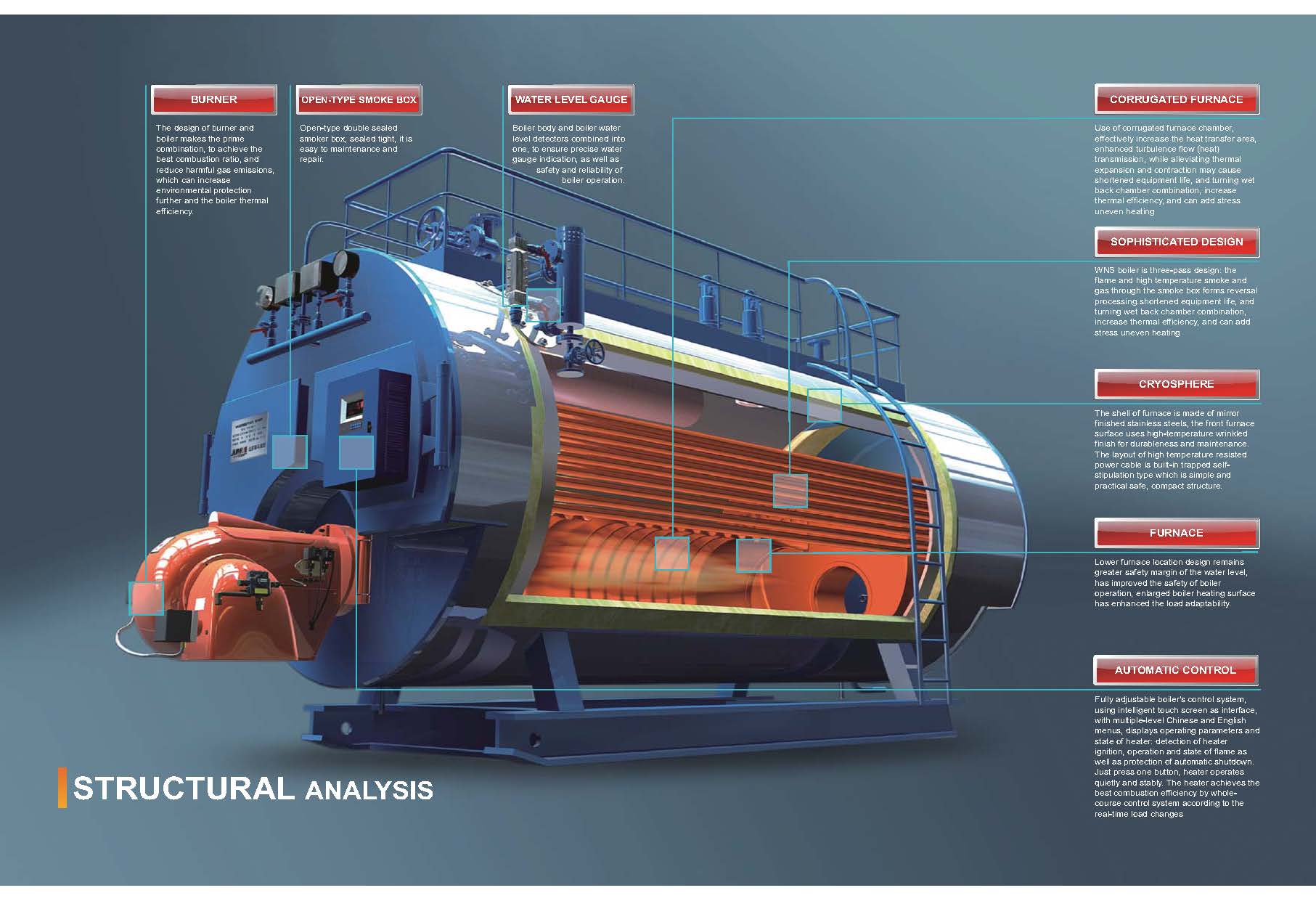
How Does Boiler Capacity and Pressure Rating Affect Cost?
When selecting an oil-fired boiler, one of the first specifications to define is steam capacity (tons of steam per hour) and working pressure (bar/psi). These two parameters directly impact not only the design and materials required but also the manufacturing complexity, auxiliary equipment size, and ultimately the price. Ignoring their effect can lead to budget miscalculations or underperforming systems.
Boiler capacity and pressure rating strongly affect cost because larger capacity boilers require more heat transfer surface area, larger pressure vessels, and bigger auxiliary systems, while higher pressure ratings demand thicker steel, more advanced welding, stricter certifications, and higher-spec safety equipment. As a result, costs increase nonlinearly with capacity and pressure.
This makes it essential to balance your process needs with cost-optimized sizing.
Boiler cost increases linearly with capacity and pressure.False
Costs rise nonlinearly due to material thickness, certification, and auxiliary system scaling.
Higher capacity and pressure ratings require more advanced design and manufacturing, driving up price.True
Larger heat transfer areas, thicker steel, and high-pressure safety compliance add to CAPEX.
1. Effect of Capacity on Cost
Heat Transfer Surface Area: More tubes, larger shell, and extended furnace.
Auxiliaries: Bigger pumps, fans, and burners required.
Space & Installation: Civil works and piping costs scale with size.
| Boiler Capacity | Typical Cost Range | Notes |
|---|---|---|
| 1–5 TPH | $50,000 – $150,000 | Small industrial use |
| 5–20 TPH | $200,000 – $600,000 | Food, textile, chemical plants |
| 20–50 TPH | $700,000 – $1.5M | Large process & captive power |
| 50+ TPH | $2M+ | Utility-scale, custom engineered |
2. Effect of Pressure Rating on Cost
Thicker Pressure Vessel Walls: ASME Section I or EN 12952 compliance.
More Expensive Materials: For >40 bar, alloy steels often replace carbon steel.
Stricter Safety Systems: High-pressure safety valves, drum internals, controls.
Testing & Certification: Hydrostatic testing at 1.5× design pressure increases QA/QC costs.
| Pressure Rating | Typical Impact on Cost |
|---|---|
| <20 bar | Baseline cost |
| 20–40 bar | +15–25% over baseline |
| 40–60 bar | +25–40% over baseline |
| >60 bar | +50% or more, depending on alloys |
3. Case Example
A customer requested a 10 TPH boiler at 18 bar vs. 40 bar:
18 bar fire-tube design cost: $320,000.
40 bar water-tube design with thicker drums: $430,000.
Difference: +34%, mainly due to vessel wall thickness and certification.
4. Engineering Insight
Capacity affects size and auxiliaries.
Pressure affects materials and vessel design.
The highest cost multipliers occur when both scale up together—a 50 TPH, 60 bar boiler costs 5–6× a 10 TPH, 20 bar boiler, not just 5×.
Conclusion
Boiler capacity and pressure rating are the primary technical drivers of cost in oil-fired boiler projects. Larger boilers demand more heat exchange surface and auxiliaries, while higher pressures require advanced metallurgy and certification. Buyers should carefully match process requirements to avoid over-specification and unnecessary CAPEX.
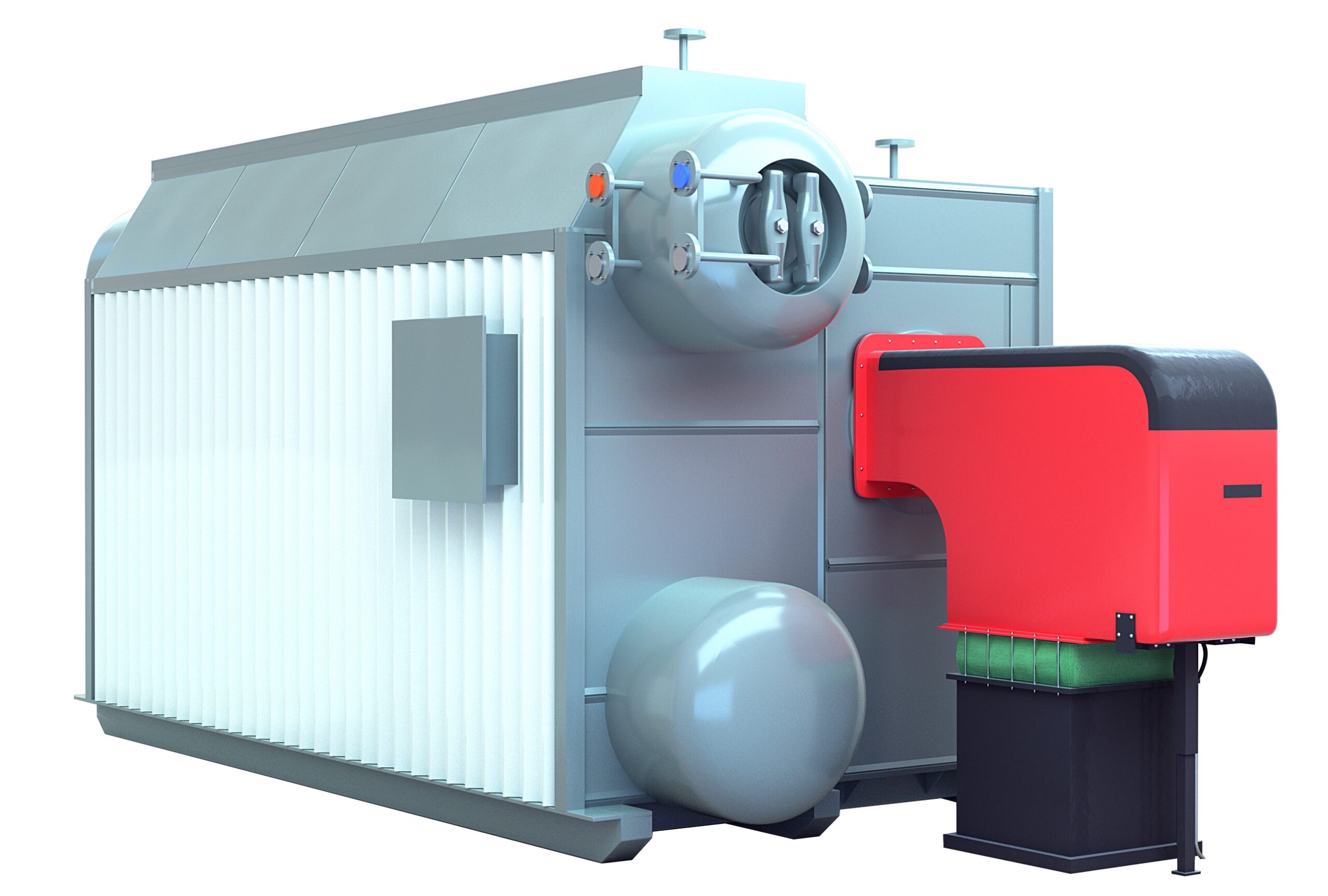
What Role Do Auxiliary Systems (Burner, Economizer, Feedwater System) Play in Total Cost?
When evaluating an oil-fired boiler investment, many buyers focus on the base boiler unit price. However, the reality is that the auxiliary systems—burner, economizer, feedwater treatment, pumps, chimneys, and controls—can contribute 30–50% of the total installed cost. These systems are not optional extras; they are essential to ensure efficient combustion, reliable steam generation, and long-term operational safety.
Auxiliary systems such as burners, economizers, and feedwater systems play a major role in total boiler cost because they ensure proper combustion, energy recovery, and water quality. The burner alone can represent 15–20% of cost, the economizer adds 5–10% but improves efficiency, and the feedwater system can account for 10–15%. Together, auxiliaries often equal or exceed the boiler’s base price while reducing lifecycle fuel and maintenance costs.
This means a realistic budget must always account for these critical components.
Auxiliary systems are optional add-ons for oil-fired boilers.False
Burners, feedwater treatment, and controls are essential for safe and efficient operation.
Auxiliary systems often account for 30–50% of the total installed cost of an oil-fired boiler.True
Burners, economizers, and feedwater systems add significant cost but are indispensable for efficiency and reliability.
1. Burner System
Function: Atomizes fuel oil, mixes with air, ensures complete combustion.
Cost Impact: 15–20% of total system cost.
Efficiency Role: Poor-quality burners waste fuel and increase emissions.
Advanced Options: Low-NOx burners, digital combustion controls.
2. Economizer
Function: Recovers flue gas heat to preheat feedwater.
Cost Impact: 5–10% of total boiler project.
Efficiency Role: Improves efficiency by 3–6%, lowering fuel bills.
Payback: Often within 2–3 years.
| Boiler Size | With Economizer Efficiency (%) | Without Economizer Efficiency (%) |
|---|---|---|
| 5 TPH | 84 | 79 |
| 10 TPH | 85 | 80 |
| 20 TPH | 86 | 81 |
3. Feedwater System
Function: Conditions and supplies water to boiler at required pressure/quality.
Components: Pumps, deaerator, water softener/RO, chemical dosing system.
Cost Impact: 10–15% of total project.
Efficiency Role: Prevents scaling, corrosion, and unplanned downtime.
4. Additional Auxiliaries
Chimney/stack (5–8%).
Instrumentation and control panels (5–12%).
Oil storage and handling system (varies).
5. Case Example
For a 10 TPH, 25 bar oil-fired boiler:
Base boiler: $320,000.
Burner system: $65,000.
Economizer: $35,000.
Feedwater system: $50,000.
Other auxiliaries (stack, controls, piping): $100,000.
Total Installed Cost: ~$570,000.
Here, auxiliaries represented ~44% of total investment—but also ensured efficiency and long-term reliability.
Conclusion
Auxiliary systems are not secondary—they are integral to boiler cost and performance. While they add significantly to CAPEX, they deliver payback through efficiency gains, fuel savings, and reduced downtime. Any cost evaluation that ignores them risks major underestimation.
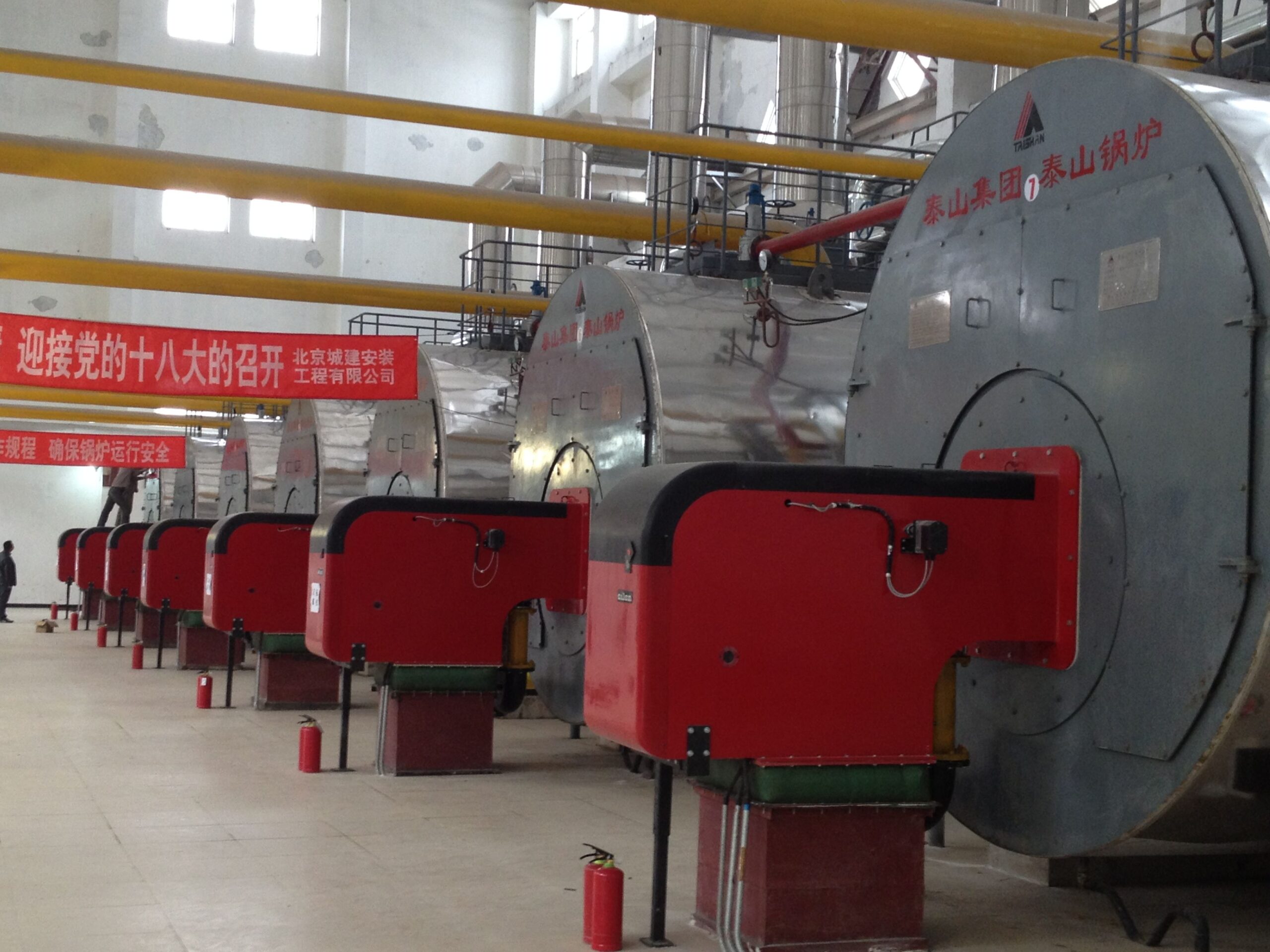
What Is the Difference in Cost Between Packaged and Custom-Designed Oil-Fired Boilers?
When industrial users budget for an oil-fired boiler, one of the earliest decisions is whether to select a packaged unit or commission a custom-designed system. This choice significantly influences both upfront capital cost and long-term operating expenses. A packaged boiler typically arrives factory-assembled, ready to connect and run, while a custom system is engineered for site-specific requirements such as higher capacities, unique steam parameters, or integration with existing infrastructure.
Packaged oil-fired boilers generally cost 20–35% less than custom-designed units of the same capacity because they are standardized, factory-assembled, and require less on-site installation. Custom-designed boilers, however, provide greater flexibility, higher pressure/temperature capabilities, and better integration with complex plants, but involve longer delivery times and higher engineering, fabrication, and installation costs.
This cost difference is not just about initial CAPEX—it reflects differences in scalability, flexibility, and lifecycle value.
Packaged boilers are always cheaper in both upfront and lifecycle costs than custom systems.False
While packaged boilers have lower initial cost, custom systems may offer better efficiency, durability, and integration for complex plants, reducing lifecycle expenses.
Custom-designed boilers typically cost 20–50% more than packaged systems due to engineering, fabrication, and site integration requirements.True
Customization adds complexity and longer project timelines, increasing both material and labor costs.
1. Packaged Oil-Fired Boilers – Cost Characteristics
Capacity Range: Up to ~20 TPH, 20–25 bar.
Price Range: $50,000 – $600,000 depending on size.
Advantages:
Factory-tested, minimal site work.
Lower transportation and installation cost.
Shorter delivery (3–6 months).
Limitations:
Restricted capacity and design options.
Less flexible integration with advanced fuel or emission systems.
2. Custom-Designed Oil-Fired Boilers – Cost Characteristics
Capacity Range: >20 TPH, up to 150 bar+ for utility-grade.
Price Range: $400,000 – $5 million+.
Advantages:
Tailored to site fuel, steam demand, and environmental compliance.
Can integrate advanced economizers, multi-fuel burners, or cogeneration.
Higher durability and longer lifecycle ROI for large operations.
Limitations:
Longer lead time (8–14 months).
Requires detailed site engineering.
Higher installation and commissioning cost.
3. Comparative Cost Table
| Parameter | Packaged Boiler | Custom-Designed Boiler |
|---|---|---|
| Capacity Limit | ≤20 TPH | >20 TPH, utility scale |
| Delivery Time | 3–6 months | 8–14 months |
| Installation Cost | 10–15% of base price | 20–35% of base price |
| Efficiency | 82–87% | 85–92% |
| Price Range | $50k – $600k | $400k – $5M+ |
4. Example Case
A 10 TPH, 25 bar packaged boiler may cost around $280,000 including auxiliaries with installation adding another $40,000. A custom 10 TPH, 40 bar system with advanced economizer and emissions control may cost $420,000–$480,000, with installation and commissioning raising the total beyond $600,000.
Conclusion
The choice between packaged and custom oil-fired boilers depends on scale, flexibility needs, and long-term ROI. Packaged boilers are ideal for small to mid-sized industrial users seeking lower upfront cost and fast delivery, while custom designs are justified when higher pressures, unique integration, or strict environmental compliance is required.
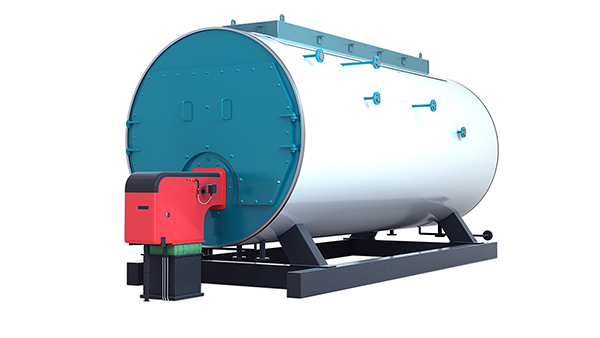
How Do Installation and Commissioning Expenses Impact the Overall Budget?
When budgeting for an oil-fired boiler, many buyers initially focus on the boiler unit price. However, the installation and commissioning phase often represents a substantial share of total project cost. These expenses go beyond simply placing the boiler in position—they include civil works, piping, electrical connections, auxiliary system integration, safety checks, and operator training. Ignoring this portion of investment can lead to budget overruns of 15–30%.
Installation and commissioning expenses typically add 20–35% to the total oil-fired boiler project budget, depending on boiler size, site conditions, and system complexity. Smaller packaged boilers may only require 10–15% additional cost, while large custom-designed systems can double installation spending due to specialized foundations, extensive piping, and advanced automation integration.
This means that true project cost must account for more than just the equipment—it includes the effort required to make it fully operational.
Installation and commissioning costs are negligible compared to boiler purchase price.False
They can add 20–35% to the total project budget, making them a major cost factor.
Commissioning involves testing, calibration, and operator training, not just switching on the boiler.True
Proper commissioning ensures safe, efficient, and compliant operation.
1. Breakdown of Installation Costs
Civil & Structural Works (5–10%) – foundation, housing, chimney base.
Mechanical Erection (5–12%) – boiler placement, piping, ducting, insulation.
Electrical & Controls (3–8%) – cabling, switchgear, control panels.
Auxiliary Integration (5–10%) – burner, economizer, feedwater system, stack.
2. Commissioning Expenses
System Calibration: Burner tuning, pressure/temperature controls.
Performance Testing: Efficiency, emissions, safety interlocks.
Training Programs: Operators trained on daily operations and troubleshooting.
Documentation: Compliance reports for regulators.
3. Cost Comparison Example
| Boiler Type | Base Boiler Cost | Auxiliaries | Installation & Commissioning | Total Installed Cost |
|---|---|---|---|---|
| 5 TPH Packaged | $180,000 | $70,000 | $40,000 (15%) | $290,000 |
| 20 TPH Custom | $420,000 | $180,000 | $200,000 (27%) | $800,000 |
| 50 TPH Utility | $900,000 | $450,000 | $500,000 (33%) | $1,850,000 |
4. Case Example
A 20 TPH oil-fired boiler project in Southeast Asia initially budgeted $600,000 for boiler + auxiliaries only. Installation and commissioning were underestimated at $80,000, but actual costs reached $200,000 due to site-specific piping, high-pressure steam integration, and extended testing. The final budget overran by 20%—an avoidable mistake with proper upfront planning.
5. Cost Reduction Strategies
Pre-fabricated Skids: Reduce onsite welding and piping labor.
Standardized Controls: Faster commissioning vs. custom-built automation.
Vendor-Supported Installation: EPC contracts streamline cost control.
Early Site Surveys: Prevents underestimation of civil/utility expenses.
Conclusion
Installation and commissioning are not minor add-ons—they are integral to total project economics. By realistically budgeting 20–35% for this phase, operators can avoid overruns and ensure the boiler delivers safe, efficient, and compliant performance from day one.
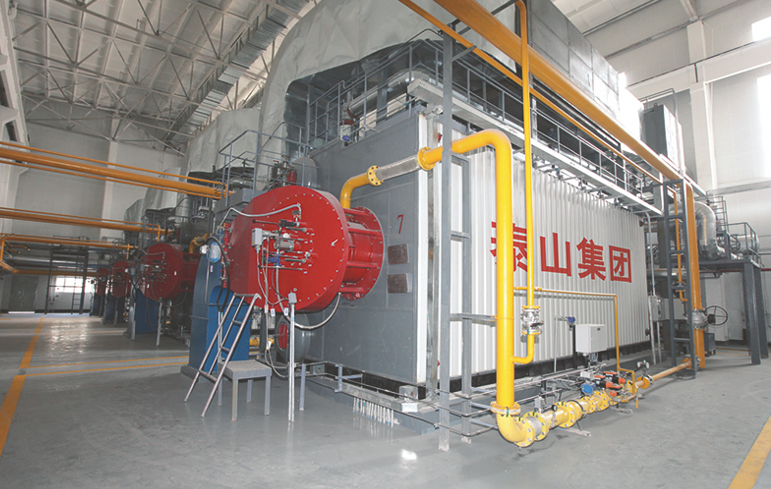
What Are the Long-Term Operational and Maintenance Cost Considerations?
When planning an oil-fired boiler investment, many buyers focus on capital cost but underestimate the operational and maintenance (O&M) expenses that dominate the boiler’s lifecycle. Since fuel, water treatment, and servicing account for 70–80% of total ownership cost, understanding these factors is essential for accurate budgeting and long-term profitability.
The main long-term operational and maintenance cost considerations for oil-fired boilers include fuel consumption (60–70% of lifecycle cost), routine maintenance (5–10%), replacement of wear parts (burners, pumps, refractory), water treatment chemicals, downtime risk, and compliance testing. High-efficiency designs, predictive maintenance, and automation can reduce O&M costs by 10–20% over the boiler’s life.
This means selecting the right boiler design and service approach has a larger financial impact than negotiating equipment purchase price.
Capital expenditure is the largest cost component in oil-fired boiler ownership.False
Fuel consumption dominates lifecycle costs, often exceeding 60% of total expenditure.
Regular maintenance and water treatment reduce lifecycle costs by preventing efficiency loss and unplanned downtime.True
Scaling, fouling, and poor burner performance increase fuel waste and repair expenses.
1. Fuel Costs – The Dominant Factor
Represents 60–70% of lifetime cost.
Efficiency losses of just 1% can increase fuel bills by thousands of dollars annually.
Fuel oil quality (viscosity, sulfur content) impacts burner wear and efficiency.
2. Routine Maintenance
Annual servicing: Burner tuning, safety valve calibration, refractory inspection.
Consumables: Gaskets, filters, seals.
Labor: Skilled technicians are critical to prevent downtime.
Cost share: Typically 3–5% of annual O&M budget.
3. Component Replacement
Burners: 8–12 year lifespan.
Pumps and fans: 10–15 years.
Refractory: 5–8 years depending on duty cycle.
Unexpected failure leads to high downtime cost.
4. Water Treatment & Blowdown
Essential for preventing scaling and corrosion.
Cost depends on raw water hardness and treatment method (softener, RO, chemicals).
Poor treatment can reduce efficiency by 5–10% and shorten boiler life.
5. Compliance and Testing
Regular emissions checks for NOx, SO₂, and particulates.
Safety certification renewals every 1–3 years depending on jurisdiction.
Associated costs include inspection fees and temporary downtime.
6. Example Lifecycle Cost Breakdown
| Cost Element | Share of Lifecycle Cost | Notes |
|---|---|---|
| Fuel | 60–70% | Highly dependent on efficiency & oil prices |
| Water Treatment | 5–8% | Chemicals, blowdown losses |
| Routine Maintenance | 5–10% | Inspections, tuning, minor parts |
| Component Replacement | 8–12% | Burners, fans, refractory, pumps |
| Compliance & Testing | 3–5% | Emissions, safety certification |
7. Strategies to Reduce O&M Costs
Economizers & Condensing Units: Reduce fuel use by 5–8%.
Advanced Automation: Optimizes combustion and detects inefficiencies.
Predictive Maintenance: Sensors forecast failures before breakdowns.
High-Quality Water Treatment: Extends boiler life and prevents scaling.
Training Operators: Reduces human error and improves efficiency.
Conclusion
Long-term operational and maintenance costs often outweigh the purchase price of an oil-fired boiler. A strategic focus on fuel efficiency, preventive maintenance, and water treatment is the best way to control total cost of ownership and extend boiler life.
🔍 Conclusion
The price of an industrial oil-fired boiler is shaped by capacity, pressure, efficiency, and system scope. While the upfront investment may seem high, choosing the right boiler with proper auxiliary systems and installation planning ensures long-term reliability and fuel savings.
📞 Contact Us
💡 Need a detailed quotation for an oil-fired boiler project? We provide cost analysis, system design, and turnkey installation support to help you select the most cost-effective solution.
🔹 Contact us today for a customized oil-fired boiler quotation that matches your capacity and budget needs. 🏭🔥💰✅
FAQ
How much does an industrial oil-fired boiler cost?
The cost depends on capacity, design, and customization:
Small packaged oil-fired boilers (1–5 t/h): $30,000 – $80,000
Medium capacity (6–20 t/h): $100,000 – $300,000
Large units (20–75+ t/h): $500,000 – $1,500,000+
Prices exclude installation, shipping, and auxiliary equipment.
What factors influence the price of an oil-fired boiler?
Key cost drivers include:
Boiler capacity and pressure rating
Fuel efficiency (standard vs condensing designs)
Auxiliary equipment – burners, economizers, feedwater systems
Material selection – high-grade steel, corrosion resistance
Automation level – manual vs PLC-based intelligent controls
Compliance requirements – ASME, CE, or local certifications
What are the operating costs of an oil-fired boiler?
Operating costs are dominated by fuel expenses:
Fuel oil consumption – The largest OPEX (60–80%).
Maintenance – Burner servicing, tube cleaning, water treatment.
Labor and utilities – Skilled operators and electricity for auxiliaries.
Emissions control – Filters or scrubbers may be required for compliance.
How does efficiency affect the cost of ownership?
A boiler with higher efficiency (90% vs 80%) reduces annual fuel consumption significantly.
Example: A 10 t/h oil-fired boiler running 8,000 hours/year can save $50,000–$100,000+ annually in fuel when efficiency is optimized.
Over 20 years, efficiency improvements have more impact than the initial purchase price.
What is the typical total installed cost of an oil-fired boiler system?
Beyond the boiler itself, installation includes:
Civil works and foundations
Piping and electrical connections
Auxiliary systems (pumps, water treatment, controls)
Commissioning and testing
The installed cost is usually 1.3–2 times the boiler purchase price.
References
U.S. Department of Energy – Industrial Boilers – https://www.energy.gov
ASME – Boiler and Pressure Vessel Standards – https://www.asme.org
Forbes Marshall – Oil-Fired Boiler Cost Factors – https://www.forbesmarshall.com
Babcock & Wilcox – Industrial Boiler Systems – https://www.babcock.com
Cleaver-Brooks – Boiler Efficiency and Cost of Ownership – https://www.cleaverbrooks.com
Thermax – Oil-Fired Boiler Solutions – https://www.thermaxglobal.com
Spirax Sarco – Cost Considerations in Steam Boilers – https://www.spiraxsarco.com
ResearchGate – Economic Analysis of Oil Boilers – https://www.researchgate.net
ScienceDirect – Lifecycle Costs of Industrial Boilers – https://www.sciencedirect.com
Engineering Toolbox – Boiler Fuel Consumption Data – https://www.engineeringtoolbox.com

